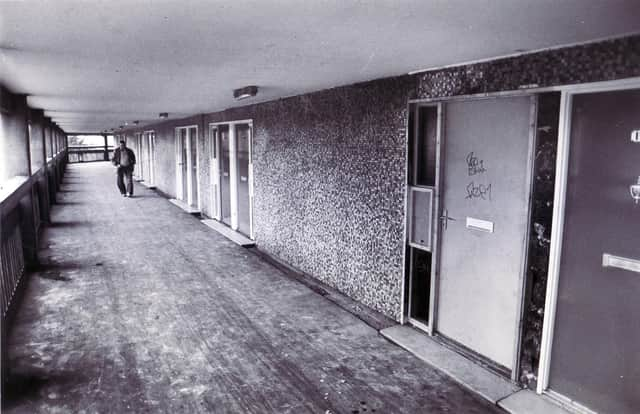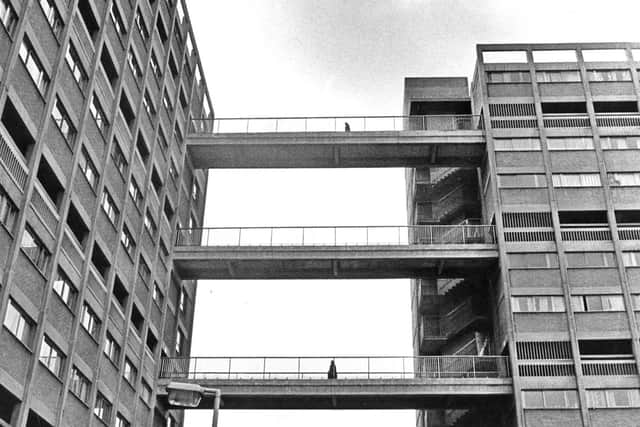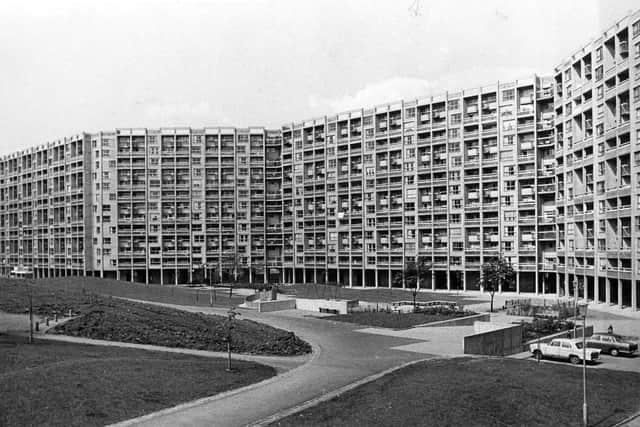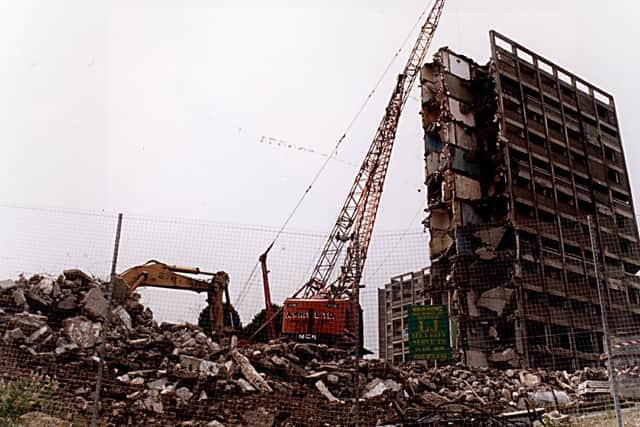Sheffield history: Kelvin Flats became a 'crime-plagued symbol of a Sixties architectural dream gone wrong'


But by September 199, Kelvin Flats had become a cruming, crime-plagued symbol of a Sixties architectural dream gone wrong.
Its long wind swept corridors were empty, litter billowed where children once played, howling gales the only sound where happy voices echoed.


Advertisement
Hide AdAdvertisement
Hide AdDemolition was due to begin in a few months and by the end of 1995 the flats would be completely flattened.
The eyesore gone, condemned as a badly designed concrete jungle, falling apart and riddled with vandalism and crime.
But it wasn't always like that. When the flats first opened in 1969 they were hailed as the answer to the slums they replaced.
In the Sixties, it wasn't uncommon for 33 people living in 10 slum houses in Kelvin's grey, terraced streets to share three outside toilets. They laughed at talk of 'bathrooms' - they knew they would have to boil water before a decent wash in the kitchen sink.


Advertisement
Hide AdAdvertisement
Hide AdThe flats helped do away with some of that squalor but they brought problems of their own. Residents felt isolated, cut off from their neighbours, communities were lost...and the rot set in.
Kelvin cost £3.5 million to build and would cost £1.8m to tear down. To save them would have cost £45m.
Just two people were still living on the vast 947-flat complex as demolition day approached.
A TV flickering or a mysterious bang in the early hours were the only things to remind one of them he was not alone on the sprawling complex.


Advertisement
Hide AdAdvertisement
Hide AdThe 64-year-old, who had lived in his first storey Kelvin Walk flat for more than four years.
He told me - the intrepid young reporter tasked with finding the final folk still living in the flats: "It is a bit lonely now, especially when you think how you're the only one on the corridor. I want to get out. I have been happy, there's been no problems. The flats are comfortable."
He had been offered a new property but reckoned it was no better than his Kelvin home.
